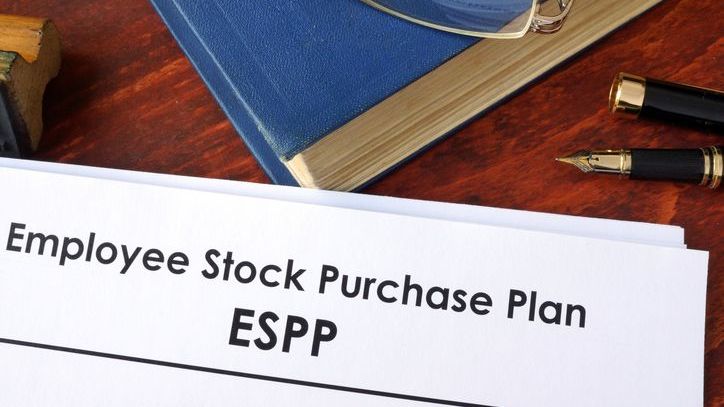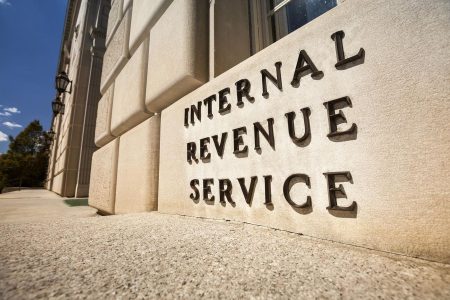Employee stock purchase plans (ESPPs) are benefits offered by companies to help employees invest in company stock at a discount. These plans are designed to encourage ownership and align employee interests with those of the company. Understanding the tax treatment of ESPP contributions can help employees make the most of this benefit. Specifically, many may wonder whether these contributions are made with pre-tax or after-tax dollars, which can impact overall financial planning and potential tax liabilities.
If you have questions about how an employee stock purchase plan could impact your investment portfolio, consider speaking with a financial advisor.
Have Questions About Your Taxes?
A financial advisor may be able to help. Match with an advisor serving your area today.
Get Started Now
What Is an Employee Stock Purchase Plan?
An employee stock purchase plan is a company-sponsored program that allows employees to purchase company stock at a discount, typically through payroll deductions.
This benefit aims to align the interests of employees with those of shareholders by giving employees a financial stake in the company’s performance. Seen as a way to incentivize and reward employees, ESPPs are popular among publicly traded companies.
How an Employee Stock Purchase Plan Works
ESPPs operate through regular payroll deductions, with employees choosing to contribute a portion of their earnings to purchase company stock. These contributions accumulate over a set offering period, usually six months to a year.
At the end of this period, the company uses the accumulated funds to buy shares on behalf of the employees, typically at a discount of up to 15% off the market price.
Often, companies also offer a lookback provision, which allows employees to buy shares at the stock price at either the beginning or end of the offering period, whichever is lower. This gives employees the advantage of buying stock at a potentially lower price, maximizing their discount and potential gains.
ESPP Enrollment
Enrollment in an ESPP is usually straightforward. Employees sign up during the enrollment period, choosing a percentage of their salary to be deducted each pay period.
There are often limits on how much an employee can contribute, both in terms of the percentage of their salary and a maximum dollar amount. Typically, the cap is $25,000 worth of stock per calendar year for tax-qualified plans under Section 423 of the Internal Revenue Code.
Once enrolled, payroll deductions automatically start, and employees begin accumulating contributions for stock purchases.
Is an Employee Stock Purchase Plan Pre-Tax?

When taking future potential tax considerations into account, employees will often ask if an employee stock purchase plan is considered pre-tax. In short, the answer is no.
Contributions to an ESPP are made with after-tax dollars. This means that the money used to buy the stock has already been taxed as part of the employee’s income.
However, qualified ESPPs can offer favorable tax treatment on the eventual sale of the stock if specific holding periods and conditions are met. This can result in getting taxed at long-term capital gains rates rather than at ordinary income tax rates.
Maximizing the Benefits of an ESPP
To maximize the benefits of participating in an ESPP, employees should consider their financial situation and the potential risks associated with stock price fluctuations.
Diversification is key. While investing in company stock can be rewarding, it’s essential not to over-concentrate your investment portfolio in a single stock.
Deciding whether to keep or sell your ESPP shares also requires a well-considered strategy. Some choose to hold onto their shares to benefit from potential long-term appreciation, aligning their interests with the company’s growth. Others might prefer to sell the shares shortly after the purchase period ends to lock in profits and reinvest the proceeds elsewhere.
Your decision should be based on your overall financial goals, risk tolerance and the performance outlook of the company. Consulting with a financial advisor can help you make informed decisions, balancing the potential rewards of an ESPP with your goals and appetite for risk.
Frequently Asked Questions About ESPPs
Here are some common questions regarding employee stock purchase plans:
How will participation in your ESPP impact your cash flow?
Participating in an ESPP can have a notable impact on your cash flow. Contributions to an ESPP are deducted from your paycheck, reducing the amount of take-home pay you receive. These deductions can range from a small percentage to a significant portion of your salary, depending on your chosen contribution level. Understanding how these deductions will affect your monthly budget is essential for effective financial planning.
If Cash Flow Is an Issue, Can You Limit it to a One-Time Problem?
If managing cash flow is a concern, you can often adjust your ESPP contributions to better suit your financial situation. Some companies allow employees to change their contribution levels or even suspend participation temporarily. This flexibility can help you manage your finances more effectively, addressing any short-term cash flow issues and allowing participation in the ESPP without causing long-term financial strain.
How Does Income Tax Impact Your Plan to Purchase, Hold and Sell Shares?
Income tax considerations are crucial when participating in an ESPP. Contributions to an ESPP are made with after-tax dollars, which means they do not reduce your taxable income. However, holding the shares for a certain period can provide tax advantages. For qualified ESPPs, meeting specific holding requirements can lead to more favorable long-term capital gains tax rates on any profits.
Bottom Line

Employee stock purchase plans are a valuable benefit that allow employees to purchase company stock at a discount, fostering a sense of ownership and potential financial growth. However, it is important to note that contributions to an ESPP are made with after-tax dollars. Understanding this key aspect of an ESPP, along with the tax implications and potential benefits, can help you make the most of your participation. By strategically managing your contributions and considering the timing of your stock sales, you can effectively navigate the financial landscape and maximize the advantages of your ESPP.
Tax Planning Tips
- To reduce the taxes on your investment income, consider investing in tax-efficient vehicles. Municipal bonds are a potential option, providing tax-free interest income federally and often at the state level. Another strategy is to hold onto investments for extended periods to take advantage of the lower tax rates on long-term capital gains. Additionally, make use of tax-advantaged accounts such as health savings accounts (HSAs) and 529 plans for education savings, which can further enhance your tax planning strategy.
- A financial advisor with tax planning expertise can offer advice on ways to save on taxes. Finding a financial advisor doesn’t have to be hard. SmartAsset’s free tool matches you with up to three vetted financial advisors who serve your area, and you can have a free introductory call with your advisor matches to decide which one you feel is right for you. If you’re ready to find an advisor who can help you achieve your financial goals, get started now.
Photo credit: ©iStock.com/designer491, ©iStock.com/miniseries, ©iStock.com/uchar
Read the full article here










